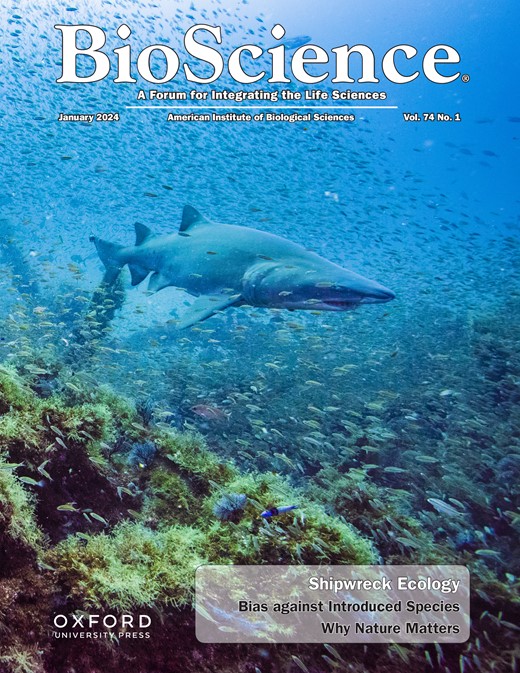面向未来的环境DNA和基于特征的食物网预测
IF 7.6
1区 生物学
Q1 BIOLOGY
引用次数: 0
摘要
食物网代表了生态系统内部的营养相互作用。消费者和资源的匹配特征有助于推断营养相互作用和食物网属性。通常用于检测物种出现的环境DNA很少用于性状匹配研究,因为通常缺少有关性状的丰度估计和描述。我们综合了最近关于营养相互作用与eDNA和性状匹配的推断,以确定eDNA -性状耦合记录方案的挑战和机遇。我们的案例研究显示了eDNA和性状数据收集的耦合如何提高了在从时空到性状变异的多个尺度上表征更多食物网的能力。未来eDNA数据集需要在时空尺度上收集新性状或汇编现有性状数据,这些数据与检测食物网和生态系统当前和未来的变化有关。本文章由计算机程序翻译,如有差异,请以英文原文为准。
Future-proofing environmental DNA and trait-based predictions of food webs
Abstract Food webs represent trophic interactions within ecosystems. Matching traits of consumers and resources helps infer trophic interactions and food-web properties. Environmental (e)DNA, commonly used for detecting species occurrences, is rarely used in trait-matching studies because abundance estimates and descriptions of relevant traits are generally missing. We synthesized recent literature on inferences of trophic interactions with eDNA and trait matching to identify challenges and opportunities for coupled eDNA–trait recording schemes. Our case study shows how coupling eDNA and trait data collection improves the ability to characterize greater numbers of food webs across multiple scales ranging from spatiotemporal to trait variation. Future-proofing eDNA data sets requires the collection of new traits or the compilation of existing trait data at spatiotemporal scales that are relevant to detect current and future changes in food webs and ecosystems.
求助全文
通过发布文献求助,成功后即可免费获取论文全文。
去求助
来源期刊

BioScience
生物-生物学
CiteScore
14.10
自引率
2.00%
发文量
109
审稿时长
3 months
期刊介绍:
BioScience is a monthly journal that has been in publication since 1964. It provides readers with authoritative and current overviews of biological research. The journal is peer-reviewed and heavily cited, making it a reliable source for researchers, educators, and students. In addition to research articles, BioScience also covers topics such as biology education, public policy, history, and the fundamental principles of the biological sciences. This makes the content accessible to a wide range of readers. The journal includes professionally written feature articles that explore the latest advancements in biology. It also features discussions on professional issues, book reviews, news about the American Institute of Biological Sciences (AIBS), and columns on policy (Washington Watch) and education (Eye on Education).
 求助内容:
求助内容: 应助结果提醒方式:
应助结果提醒方式:


